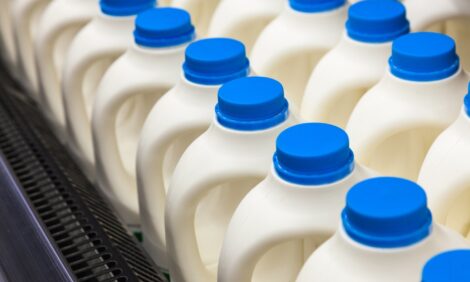



Dairy Recovery Finds New Potential in China
CHINA - Because of last year’s melamine milk powder scandal, consumers in China rushed to safer products and importers rushed to fill the gap in local supply. Consequently, Chinese imports of milk powder increased 113 percent in the first quarter of 2009.It is now apparent just how vital Chinese imports have been in stabilising the dairy market in early 2009, stated the recently released Rabobank Dairy Quarterly.
“In the stable years up to the commodity price boom and the melamine crisis, China and India accounted for about 50 percent of global demand growth in volume terms. This indicates how important the growth rate of Chinese dairy demand is for the global supply and demand balance,” said Rabobank dairy analyst Mark Voorbergen.
Recovery after melamine
Most recently, Chinese import buying has been vigorous. In total, China and intervention authorities in the US and the EU bought just under 200 thousand tonnes of milk powder tallying a 25 percent increase in normal trade volumes during the first quarter of 2009.
“Statistics are showing that the China dairy industry has recovered after melamine crisis with a growth rate of 12.04 percent from the 4th quarter of 2008 to the 1st quarter of 2009. Especially, fluid milk which grew by 15.64 percent during the same period,” said Rabobank analyst Cindy Yang, based in Shanghai.
China's dairy market recovery
Dairy analyst Yang says the main reasons behind the recovery in China's dairy market are:
- Improved regulations by central government, such Food Safety Law and regulations specific for China dairy market.
- More investments by both of government and companies to secure milk quality.
- Confidence in safe dairy products is recovering in line with production improvement and market advocation.
- Great potential for future demand for dairy products.
Urbanisation and foodservice investments
In the long term, Asia has many market opportunities for dairy growth, namely, the foodservice industry. More people are moving to and living in the urban regions which should further increase dairy consumption.
“Urban dwellers have better access to dairy products through foodservice and restaurants, than people living in rural regions,” said Voorbergen.
“A rise in the number of fast food restaurants like McDonald’s and the rise in coffee cafes will increase the use of dairy products like cheese and milk. Even though these products are only used as ingredients in hamburgers and cappuccinos, it will still lead to substantial growth in demand,” said Voorbergen.
TheCattleSite News Desk


